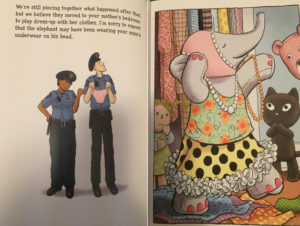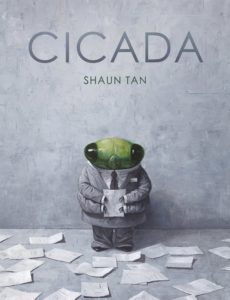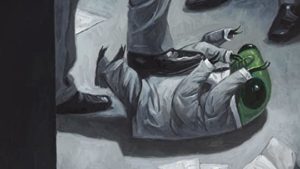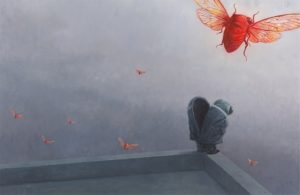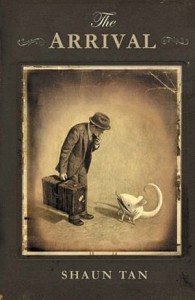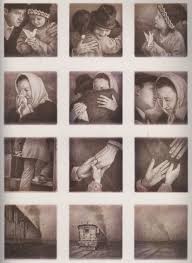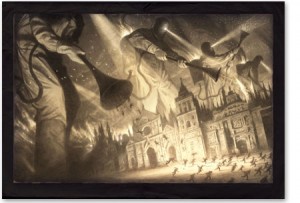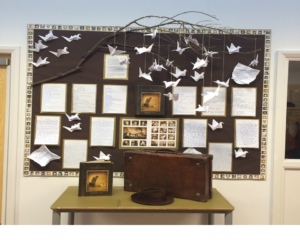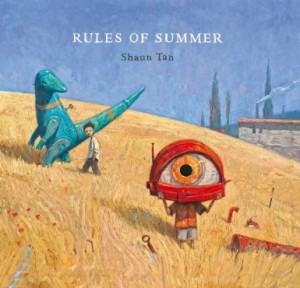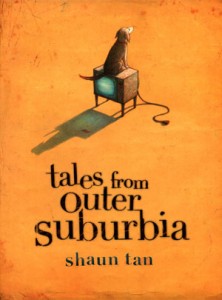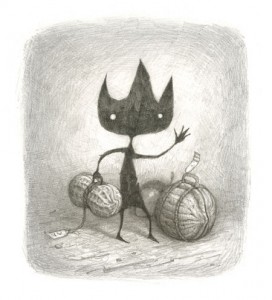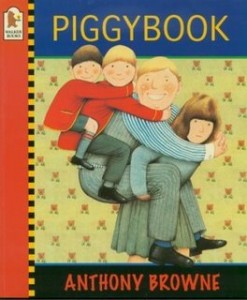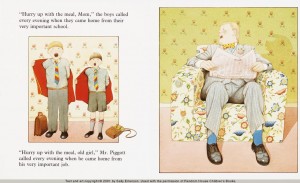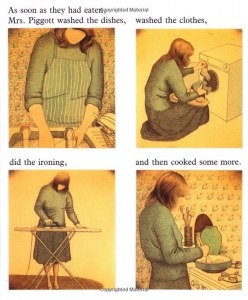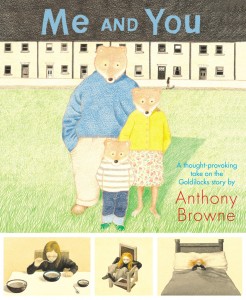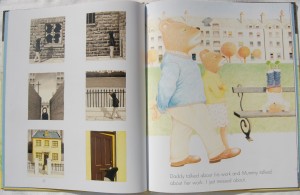I love using picture books to really challenge older children. There are many individual books that I have used very effectively:
This is a clever text all about someone coming home to find two police officers on the doorstep telling them that they believe their teddy has been misbehaving: 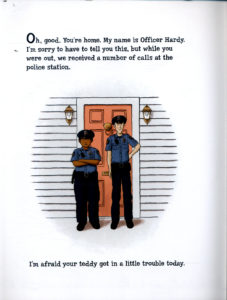
What makes this such a great book is that the language used within it allows children to explore tone and register as in some ways it is quite informal ‘I’m afraid your teddy got in a little trouble today‘ but then becomes quite technical as official jargon is used- piecing together , sorry to report, believed that:
I wrote the whole text out so they could explore this language: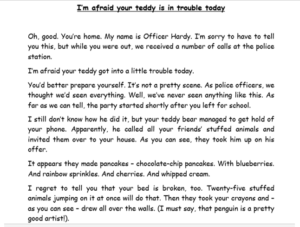
Pupils discussed the use of this jargon and created a word bank to dip into:
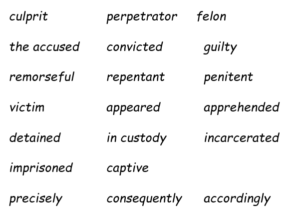 Pupils were then given a plan of the house to help them create their own police report and worked on their drafts by bringing them to life:
Pupils were then given a plan of the house to help them create their own police report and worked on their drafts by bringing them to life:
There are some authors who just keep on producing thought provoking text that I think all children should experience before leaving primary school.
SHAUN TAN:
An Australian artist who illustrates a variety of writer’s work, but has also written some very intriguing texts himself. Many of his texts explore the theme of the outsider and how they are seen by the world and how they in return see the world they are in. Tan is the master of detail:
Cicada work in tall building.
Data entry clerk. Seventeen year.
No sick day. No mistake.
Tok Tok Tok!
Cicada works in an office, dutifully working day after day for unappreciative bosses and being bullied by his co-workers. But one day, something truly extraordinary happens . . .
This story pulls at your heart strings and makes you really think what it is like to feel invisible. Tan is a master of the understated and through his depiction of this character question power and prejudice. He doesn’t need words to capture this:
The final few images leave the reader on the edge of their seat, but in typical Shaun Tan style we are left questioning everything:
The Arrival is another one of my favourite books and is an intriguing story about being a refugee in a strange world. There are no words, but many pages are packed with a number of images that give us great detail about the characters and their emotions. These are great for underpinning complex narrative writing. 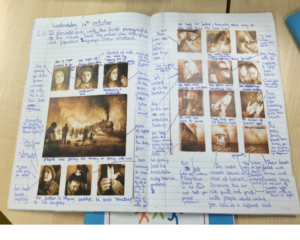 Other illustrations cover a double page and are evocative and inspirational:
Other illustrations cover a double page and are evocative and inspirational:
This wonderful display shares the quality of work that pupils produce:
Another of Tan’s books tells the tale of what two brothers were up to over their summer holidays. It is an absurd world with surreal ideas and statements, but very good for discussion:
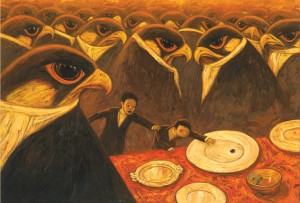 Never eat the last olive at a party
Never eat the last olive at a party
I love his writing and a wonderful collection of 15 prose short stories with illustrations is called Tales From Outer Suburbia.
The pictures stop illustrating the story and quickly become integral to telling the story and at several points through the book the prose and the pictures combine very cleverly. It’s not an illustrated children’s book, nor is it a comic. It’s somewhere in between. It’s an incredibly imaginative, just take a look at the contents page for a start:
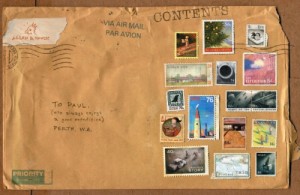 We quickly jump into Tan’s world of suburbia where there is a strange deep sea divers wandering the neighbourhood, a memory of a water buffalo who used to live in the vacant lot at the end of the street and a overseas visitor called Eric who doesn’t speak, but collects specimens that he leaves as a magical present when he flies out through the window:
We quickly jump into Tan’s world of suburbia where there is a strange deep sea divers wandering the neighbourhood, a memory of a water buffalo who used to live in the vacant lot at the end of the street and a overseas visitor called Eric who doesn’t speak, but collects specimens that he leaves as a magical present when he flies out through the window:
ANTHONY BROWNE
This amazing writer/illustrator produces wonderful books, but is often given to younger children because he has produced texts such as Willy the Wimp or My Dad. He plays around with social convention to explore why characters act in the way that they do. He makes the reader question who is right and who is wrong. An old favourite is Piggybook that explores the relationship between the members of a family:
Browne plays around with colour as he uses vibrant colours for the husband and children, but every drawing of the mother is toned down and sepia, as if she has no life in her anymore. In fact, her face seems to be disappearing too:
Browne’s work often has a darkness to it and he is very good at juxtaposing two stories so they comment on each other, while you are reading them. A good example of this is his version of Goldilocks, called ‘Me and You’. One side of page is a pen and ink version of the story, whilst the other looks like a more traditional version of this fairy tale.
 ‘Zoo’ is about a family visiting a zoo and it makes the reader ponder the question who are the real animals in the world!
‘Zoo’ is about a family visiting a zoo and it makes the reader ponder the question who are the real animals in the world! 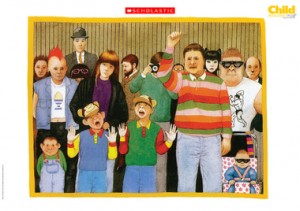 Here are a couple of other books that I have also used in upper Key Stage 2 to explore complex themes. One is called Varmints by Helen Ward and Marc Craste and it investigates the power of the individual to make a difference in the world, that so many are destroying:
Here are a couple of other books that I have also used in upper Key Stage 2 to explore complex themes. One is called Varmints by Helen Ward and Marc Craste and it investigates the power of the individual to make a difference in the world, that so many are destroying:
A completely different but equally as clever book is NICK BUTTERWORTH ‘The Whisperer’ that takes the story of Romeo and Juliet and retells it as a love story between two cats from opposing ‘families’. The tone is very colloquial and it great for getting the children to take the original play and see it in a new light!
A film version of the book can be watched on You tube http://youtu.be/RriQpqeGHCU.
If you want to visit a good blog where you can learn more about using different graphic novels dip into The Forbidden Planet website http://www.forbiddenplanet.co.uk/blog/2009/
I always want pupils to learn about the impact of what they are writing and have a joy in what they are doing. You can see this from this piece of writing that a Year 5 child has written in response to the wonderful picture book ‘Flotsam‘ by DAVID WIESNER.
Time was spent looking carefully at the images and discussing how a writer could capture the essence of them in a piece of writing:
If we can inspire children to write through amazing texts, then teaching SPAG will be easy and meaningful! Ho Ho Ho!!!!
Have a good week!

